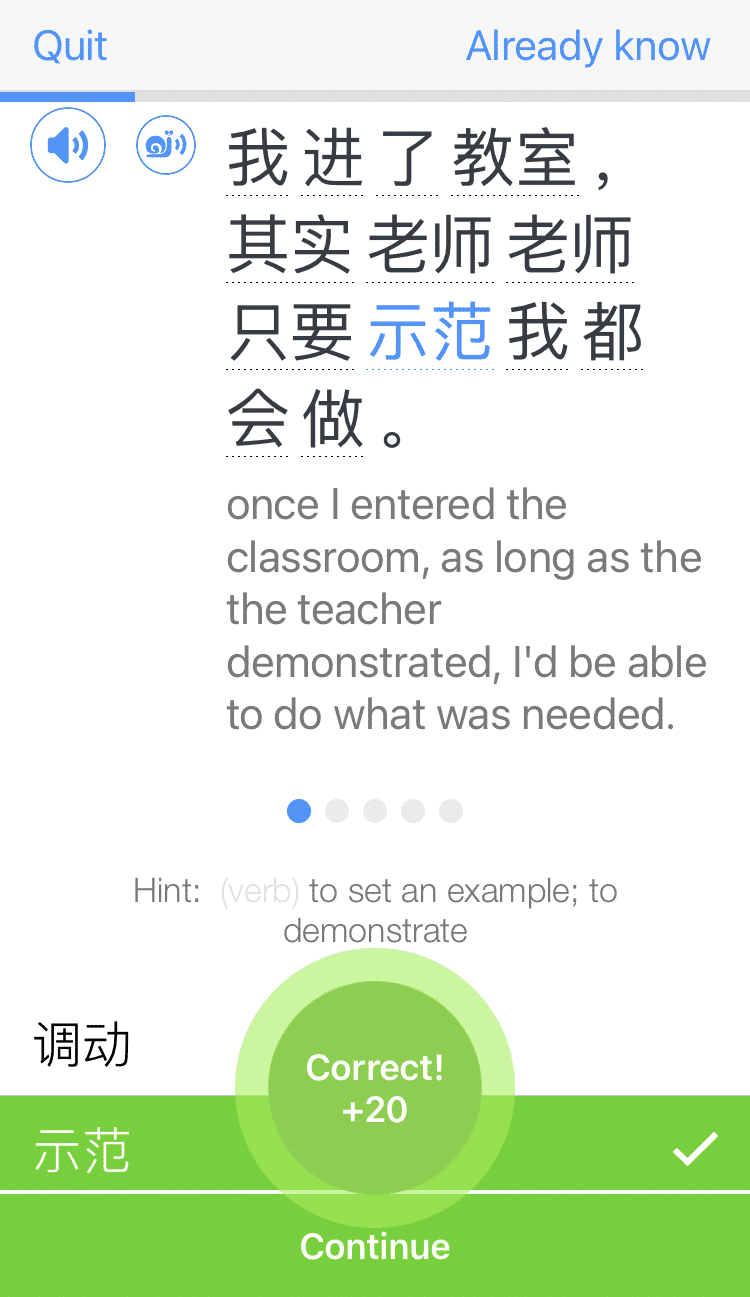The Chinese Learner’s Guide to All 214 Radicals

Radicals are small components of Chinese characters that make it easier to categorize them and look them up. In lieu of an alphabet, radicals and character components help you mentally break down a character and make it easier to remember.
Have a look at all 214 Chinese radicals, all of which we’ve outlined with usage examples. We’ll also show you how they can aid you in your understanding of Chinese writing.
Download: This blog post is available as a convenient and portable PDF that you can take anywhere. Click here to get a copy. (Download)
Complete List of Chinese Radicals
In Mandarin Chinese writing, radicals are components of characters that index them so you can look them up in dictionaries.
Every character in Chinese has one radical, usually on the left or top of the character.
The chart below contains the complete list of Chinese radicals.
Please note: Most radical charts use example characters to help you look up words in a dictionary, but the examples in this chart are meant to help you see how radicals and character components appear in different forms within a character.
Table legend:
- (V) – Variant
- (T) – Traditional
- * – Only used in traditional characters
Unmarked forms are the standard simplified Chinese version.
The Difference Between Radicals and Character Components
Chinese character components can be broken up into three categories: radicals, semantic components and phonetic components.
Some people will refer to all three categories as “radicals.” Or, specifically as “key radicals,” “semantic radicals” and “phonetic radicals.”
That’s because “radical” is used by some to describe the various components of a character, as in “this character has three radicals.”
This isn’t the way we’re using the term “radical” here, but just know that you may see the term being used in more than one way.
Radicals
部首 (bù shǒu) — Radicals are for looking up a word in a dictionary, just like the first letter of a word in English. Every one of the 85,000+ characters technically has one (and only one) radical.
Although learning to use radicals for this purpose can be helpful, most online dictionaries and dictionary apps these days only need pinyin or a drawing of the character.
Semantic components
Semantic components relate to the meaning of the character.
For example, the character 爸 (bà) — father is a vertical character, written top to bottom. The top component 父 (fù) is the semantic component, which means “father.”
Phonetic components
Phonetic components give you an idea of how to pronounce the character.
Reusing the character 爸 as our example, the bottom component 巴 (bā) clues you in to the pronunciation.
How to Use Radicals and Components to Learn Chinese
Learn about the historical origins
The Chinese writing system dates back more than 3,000 years, so many characters have evolved in form and/or meaning.
For example:
- The character 日 (rì) — sun was originally a circle with a dot in the middle, which looks a lot more like the sun.
- The character 家 (jiā) — home is made up of 宀 (mián) — roof and 豕 (shǐ) — swine. In ancient China, pigs were kept indoors. If a house had a pig, it meant people lived there, so that house was someone’s home.
Create your own memorable stories
For example:
- 我 (wǒ) means “I; me” and is composed of 手 (shǒu), meaning “hand” and 戈 (gē), meaning “spear.”
- The second stroke of “hand” and the first stroke of “spear” combine when writing the character 我.
- So your story could be, “I have a spear going through my hand.”
This combines the meaning of the character (I), the two character components (spear and hand) and a clue about how to draw the character (through) all in one sentence.
Understand the influence of pop culture
The internet has had a large effect on how we use language, and Chinese is no exception.
For instance:
- 赞 (zàn) — to praise, is the Chinese word for a social media “like,” such as you might see on WeChat.
- 汗 (hàn) — to perspire, is a slang word for being speechless because of embarrassment or exasperation.
- 大神 (dà shén) — deity; god, is a slang term for someone who’s an expert in something.
- If you call someone 面 (miàn) — noodle, it means they have no backbone.
It takes a lot of work to master Mandarin. But learning the radicals is a great way to create a “shortcut” for yourself. Look for these radicals in use anywhere that you find Chinese writing, from your favorite Chinese books to the subtitles in FluentU videos.
FluentU takes authentic videos—like music videos, movie trailers, news and inspiring talks—and turns them into personalized language learning lessons.
You can try FluentU for free for 2 weeks. Check out the website or download the iOS app or Android app.
P.S. Click here to take advantage of our current sale! (Expires at the end of this month.)
With a good understanding of Chinese radicals and character components (and the occasional dash of creativity), you’ll be on your way to reading and writing Chinese like a pro.
Download: This blog post is available as a convenient and portable PDF that you can take anywhere. Click here to get a copy. (Download)
And One More Thing...
If you want to continue learning Chinese with interactive and authentic Chinese content, then you'll love FluentU.
FluentU naturally eases you into learning Chinese language. Native Chinese content comes within reach, and you'll learn Chinese as it's spoken in real life.
FluentU has a wide range of contemporary videos—like dramas, TV shows, commercials and music videos.
FluentU brings these native Chinese videos within reach via interactive captions. You can tap on any word to instantly look it up. All words have carefully written definitions and examples that will help you understand how a word is used. Tap to add words you'd like to review to a vocab list.
FluentU's Learn Mode turns every video into a language learning lesson. You can always swipe left or right to see more examples for the word you're learning.
The best part is that FluentU always keeps track of your vocabulary. It customizes quizzes to focus on areas that need attention and reminds you when it’s time to review what you’ve learned. You have a 100% personalized experience.
Start using the FluentU website on your computer or tablet or, better yet, download the FluentU app from the iTunes or Google Play store. Click here to take advantage of our current sale! (Expires at the end of this month.)











